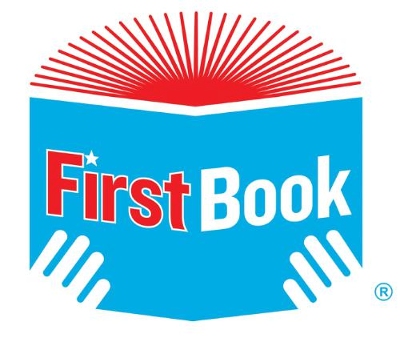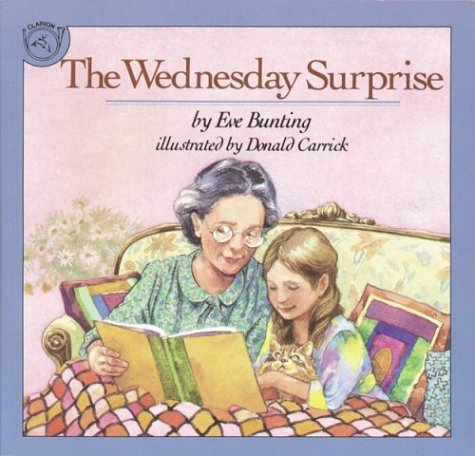 When I came to the U.S. from El Salvador at age 12, I had no knowledge of English and jumped right into a new school. My mom worked multiple jobs to support my four siblings and me, and while she firmly believed education was the best inheritance she could pass on to us, I do not recall her attending a single open house, back-to-school night, PTA meeting or parent conference. But when my brother and I were bullied in school, she sought help from a local priest, Father Somoza, who joined us for a meeting with the school principal. She also decided to move, even though she would triple the time of her commute to work by bus. Her commitment to us was unwavering, but it probably wasn’t always visible to my teachers.
When I came to the U.S. from El Salvador at age 12, I had no knowledge of English and jumped right into a new school. My mom worked multiple jobs to support my four siblings and me, and while she firmly believed education was the best inheritance she could pass on to us, I do not recall her attending a single open house, back-to-school night, PTA meeting or parent conference. But when my brother and I were bullied in school, she sought help from a local priest, Father Somoza, who joined us for a meeting with the school principal. She also decided to move, even though she would triple the time of her commute to work by bus. Her commitment to us was unwavering, but it probably wasn’t always visible to my teachers.
As a young college student, I taught adult English learners who aspired to go to college. Even though they were well-educated, I can recall the rich conversations about the challenges of navigating a totally different culture and educational system. As a result, I learned the challenges that educators face in helping ELLs succeed in their adopted country as both an English learner and subsequently as a teacher.
So it was not surprising for me to learn that when First Book asked our network of educators and program leaders what keeps them up at night, “engaging the families of my students in their learning journey” was at the top of the list.
You see, for parents with limited incomes, limited English competency, and perhaps limited education or literacy levels in their own language, family engagement is a tall order. Add a job at night and transportation challenges to those limitations, and you can see why a parent might not be involved in his or her child's education in the traditional sense.
Connecting Through Books
 One important way to build bridges with families is to read books that help us connect with one another, because for many immigrant families, the experience of reading children's books, much less owning them, has not been part of their experience growing up. Yet, we know that reading at grade level (by third grade) is a key predictor of high school graduation and career success.
One important way to build bridges with families is to read books that help us connect with one another, because for many immigrant families, the experience of reading children's books, much less owning them, has not been part of their experience growing up. Yet, we know that reading at grade level (by third grade) is a key predictor of high school graduation and career success.
At First Book, we have amazing resources to support family engagement. One of my favorite initiatives is Build Strong Families with Stories, a work of love with our partner organization, Search Institute. According to their research, all families can take actions, called Family Strengths, to grow stronger together in the following ways: Expressing Care, Providing Support, Challenging Growth, Expanding Possibilities, Sharing Power, Creating Routines and Traditions, and Connecting to Your Community. Each of these themes has several specific dimensions. For example, the Creating Routines and Traditions strength includes enjoying time together and celebrating milestones and traditions.
 First Book partnered with Search Institute to pair diverse 21 books with these family strengths. I could not wait to share this list of amazing books with national partners and with our network, which is 47% Hispanic-serving. Each book has a downloadable reading guide, available in English and Spanish, designed for parents and caregivers that includes activities, discussion prompts, and key ideas to take away from the story. These guides can be sent home with families or used as part of family nights or other parent engagement activities.
First Book partnered with Search Institute to pair diverse 21 books with these family strengths. I could not wait to share this list of amazing books with national partners and with our network, which is 47% Hispanic-serving. Each book has a downloadable reading guide, available in English and Spanish, designed for parents and caregivers that includes activities, discussion prompts, and key ideas to take away from the story. These guides can be sent home with families or used as part of family nights or other parent engagement activities.
See instructions on how to access these resources below.
Making ELL Connections: The Wednesday Surprise
 I’d like to share an example of one book in particular that resonated with me from the collection. From a cross-cultural perspective, I wondered how ELLs would respond to the conversation about these various family strengths, like "creating routines," and apply that question to their family lives. The question of creating or maintaining traditions and routines in the midst of a different culture is central to ELLs’ experiences and can be a tricky issue for them to navigate.
I’d like to share an example of one book in particular that resonated with me from the collection. From a cross-cultural perspective, I wondered how ELLs would respond to the conversation about these various family strengths, like "creating routines," and apply that question to their family lives. The question of creating or maintaining traditions and routines in the midst of a different culture is central to ELLs’ experiences and can be a tricky issue for them to navigate.
A book that is included in the Creating Routines and Traditions list is The Wednesday Surprise by Eve Bunting. The story includes a surprise as well as family celebration, and as the related reading guide suggests, celebrations encourage closeness that help a family grow stronger together.
The family featured in The Wednesday Surprise could be an immigrant family, but is not necessarily one. Even so, there are many aspects of the situation that may resonate with ELLs. For example, the family has limited resources, and many ELL families will recognize the small details that make a child feel special, like a pebble the dad brings home. In addition, the dad is frequently away from home because of his job, and when the mom needs to work late, Grandma takes the bus to visit and spend time with her grandchildren.
At the same time, the book also offers amazing conversational opportunities with ELLs and their families because it includes routines and traditions that are part of the American experience, like going to the Y for baseball practice and having pot roast on a special occasion, while opening a conversation about how ELLs celebrate holidays and recognize milestones in ways that may be different from the custom of their adopted countries.
As ELLs get older, some of those family traditions become cherished memories, but like most children, ELLs also want to experience the mainstream. They seek affirmation and acceptance, and many find themselves wanting to do things they read and hear about from their classmates that are not part of their home culture. Perhaps they want to go trick-or-treating, go to a friend's birthday party or have a sleep over. The questions prompted by The Wednesday Surprise can offer cultural nuances that open doors of understanding, perhaps in unexpected ways. These questions can help build a bridge for the delicate dance ELLs navigate between the home and school cultures, as well as expectations of them.
What I love about this book is that Anna, the child and one of the two main characters in this story, manages to do what many ELLs do: she manages to teach the adults a surprising and unexpected lesson by teaching her grandmother to read and giving her dad a gift to remember. She also takes on some new responsibilities, something very familiar to ELLs, by bringing the gift of reading home to her family – an interesting twist when you think about kids who may not be growing up in a home where reading is part of the regular routine.
Closing Thoughts
Take a look at Build Strong Families with Stories and keep an eye out for cross-cultural nuances from your students as you read the books. You may wish to invite families to a "family reading night" (or "noche de cuentos en familia") that you plan with your parents’ schedules in mind. Even with parents working multiple jobs, and with little family quality time, these opportunities can provide special moments of connection and growth that can help your students and their families learn to navigate different cultures while growing stronger as a family. Rest assured that the bridges of trust you build with the children and families you serve are a labor of love you will celebrate throughout the school year!
How can I access the Build Strong Families collection?
The full list of books is available from the Build Strong Families resource section of the First Book Marketplace.
If you're signed up with First Book, you can download the free tip sheets from the Build Strong Families section of the First Book Marketplace. Educators and program leaders around the country who work in Title I schools or serve 70% or more children from low-income families in their classroom or community program are eligible to join the First Book network. There is no limit to the number of individuals per school or program who can join. To join the First Book network, sign up today and start accessing thousands of deeply discounted, high-quality books, educational resources and basic needs items for the children and youth you serve.
Related Resources
To learn more about family strengths, visit ParentFurther.com and the Search Institute.







Add new comment